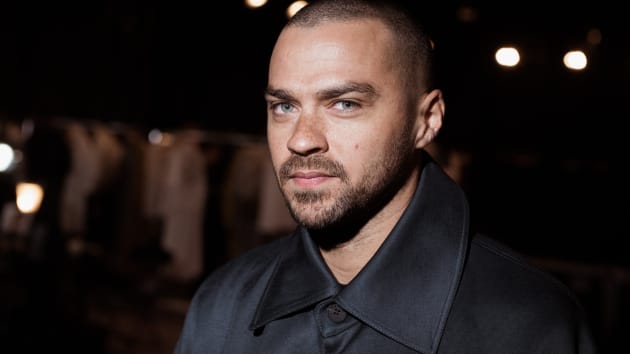
Up until about a year ago, chief financial officers had more room to breathe. Shoppers were finally let out of the pandemic lockdown to roam and open their wallets like never before, and low-interest rates made it far easier to justify expensive investments.
After inflation set in, the role has become rather stressful—possibly more than ever before. Investment has dried up, and a vague but serious threat of a recession threatens to put an end to bumper revenues. Growth in the U.S. economy is slowing, manufacturing output fell in December, and the Fed continues to hike interest rates without mercy.
Less than a third of top CFOs recently surveyed by Deloitte in November consider it a good time for greater risk-taking, and 41% are pessimistic about their companies’ financial prospects. Soon, the modern CFO may no longer be a creative co-pilot to the CEO, but a penny-pinching jobsworth.
Dev Ahuja, the CFO of the world’s largest aluminum recycler, Novelis, tells Fortune that he plans to spend the year squeezing the juice out of his company’s existing assets while inflation and high energy costs make it difficult to raise money.
This involves carrying out such unenviable tasks as “de-bottlenecking supply chains” in the U.S. and Brazil that have clogged up, in part due to sanctions against Russia.
Indeed, over half of the chief bean counters surveyed by Deloitte plan to spend the year squelching anxiously around all corners of their operations, dropping in unannounced on factories and meetings to work out how to tighten the belt by yet another notch.
Much of a CFO’s role in the impending downturn is colored by their company’s performance during the pandemic. While tech CFOs are cutting the overgrowth that sprouted during the pandemic, others are clinging to the economic rebound that followed the pandemic.
Delaware North, a century-old private company that mostly provides food and drink to stadiums, contracted from 48,000 employees at the breakout of the pandemic to 900 employees just two months later.
“The one thing we weren’t diversified from was something that made a set of circumstances that made it hard for more than six people to get together in a room. That pretty much made us shut down the company,” says CFO Chris Feeney.
Then the company hit record revenues of $3.96 billion when the world opened up a year later, and Feeney predicts that profits will still increase by about 7% this year. “I should probably be wearing a neck brace,” he says.
But growth has undoubtedly slowed. While the company invested half a billion last year, “the price and cost of capital have gone up.” This year, he plans to raise a far smaller amount—not the “fall on your sword” figure raised last year—and spend the rest of his time improving existing investments.
It’s a similar story for Polaris, a manufacturer of off-road buggies and snowmobiles. During the pandemic, it closed factories for about six weeks and furloughed staff. When it reopened factories, “we found a tremendously positive sales environment,” says CFO Bob Mack.
His job now involves helping suppliers with labor and procurement. With record revenues of $8.18 billion in 2021, Polaris burned through its inventory in a hot minute. The company found it more difficult to procure parts—something that still hasn’t returned to normal, says Mack.
Eyeing choppy waters ahead, Mack increased research spending. “When we think about preparing for any kind of downturn…we’re gonna prioritize R&D,” he says.
Of course, most CFOs do not complete a full business cycle at the same company and will not reap what they sow. According to research on CFOs from Korn Ferry, CFOs last an average of 4.9 years in the job—shorter than the average business cycle of 5.4 years, according to the Congressional Research Service.
Consequently, part of a CFO’s role requires continuing the work of their predecessor. Take Sharon Yeshaya, who became Morgan Stanley’s CFO in 2021. Days after her firm reported a $6 billion drop in annual revenue, expected that credit losses would rise from $4 million to $280 million, and laid off about 1,600 staff, she tells Fortune that the bank’s “preparation for weathering this type of a downturn started more than a decade ago.”
Yeshaya did not set those wheels in motion. In the aftermath of the financial crisis, the Morgan Stanley lifer was surviving mass layoffs at the firm’s cratering fixed-income department, not advocating for them herself.
After regulators shut down the kind of rampant speculation that led to the 2008 crash, she has continued the bank’s aim of ginning up its reliable wealth and asset management arm.
These businesses now comprise almost half the bank’s revenues, and have allowed the firm to rise in value by almost a third since the crash, despite revenue from investment banking and equity underwriting divisions falling by 49% and 73%, respectively, in its most recent financial report.
Of course, Yeshaya must accomplish this task while wading through the same problems as her peers at other corporate giants: the invasion of Ukraine, what she calls the “most anemic underwriting calendar in a decade,” the collapse of the S&P 500 by almost 20%, supply chain disruptions, and the highest inflation rates in 40 years.
While the balance sheets may look vastly different, the challenges thrown at the modern CFO have more in common than not.
Learn how to navigate and strengthen trust in your business with The Trust Factor, a weekly newsletter examining what leaders need to succeed. Sign up here.


























































